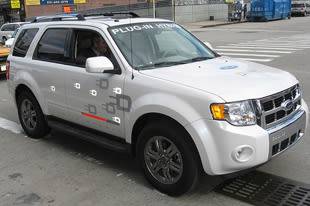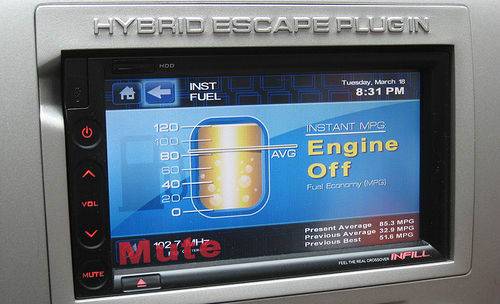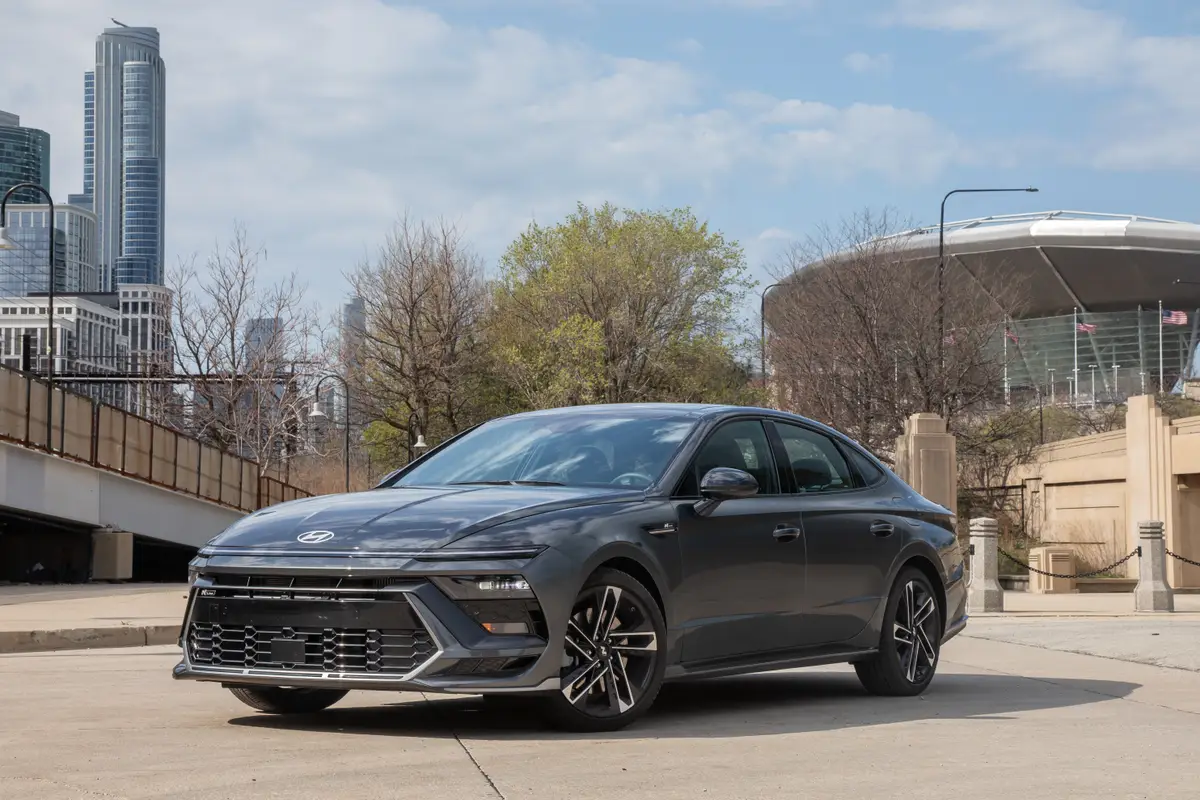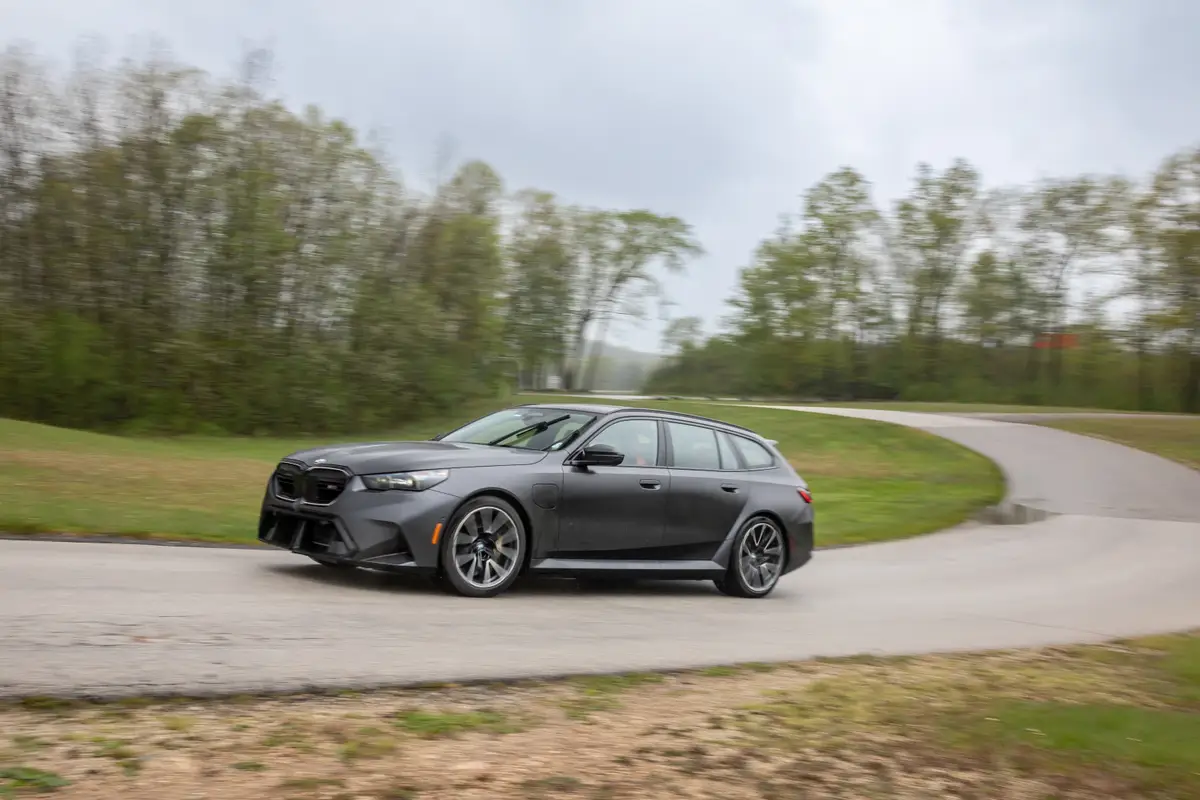First Drive: Ford Escape Plug-In Hybrid


In connection with the New York International Auto Show, in a city where Ford Escape Hybrid taxicabs are an increasingly common sight, Ford offered me a test drive in an experimental plug-in version of its compact SUV.
The philosophy behind this vehicle is similar to that of the Toyota Prius plug-in, on which I reported from Detroit: to increase the battery capacity and to charge that battery in the home with a common extension cord before hitting the road. This supplements the normal hybrid with power that’s comparatively cheap and potentially cleaner than gasoline, and that comes from North American sources such as coal, natural gas, nuclear, and, in regrettably rare cases, renewable energy like hydroelectric and solar. All current hybrids generate their own electricity with their gas engines and through recapturing the energy of motion during braking, which improves efficiency over that of a larger gas engine alone but doesn’t meet the full potential of electric power.

Though both companies started with existing models that employ the same basic parallel-hybrid technology, they went about it in different ways. Where Toyota doubled the Prius’ battery capacity by adding a second nickel-metal-hydride pack, Ford replaced its NiMH pack with a lithium-ion battery that quintuples capacity. The underlying operation in this plug-in version is somewhere between that of the regular hybrid and the Prius plug-in. (I say underlying because the basics — right pedal go, left pedal stop — are the same to the driver.) Though the Prius’ battery has less capacity, it accelerates the car at a decent clip up to about 60 mph before the gas engine starts up. The Escape plug-in lets you hit about 40 mph on electric power alone. When in electric-only mode, it gives quicker acceleration than the regular Escape Hybrid would, but it’s still pretty easy to ignite the gas engine inadvertently by applying too much pedal pressure. Also missing from the Plug-In Escape is an indicator to warn when you’re about to exceed the threshold and start the engine, a feature the Prius plug-in had.
Now, with all of the above established — because I knew you would wonder — it’s practically immaterial. What matters is how efficient any vehicle is in the long run. That’s tough to quantify with a plug-in because the farther you drive, the more of the initial charge is worn off. Based on a 40-mile city drive (a typical distance for American motorists), the mileage would equal 120 mpg, according to Ford. On the highway it would be more like 80 mpg.
Another way to look at it is the electric-only range followed by the regular hybrid mileage. If driven electric-only, Ford says, the plug-in Escape would go about 20 miles. (Of course, that would be at a maximum of 40 mph.) After that, regular hybrid operation would give you the Escape Hybrid’s 34/30 mpg city/highway. The Prius plug-in goes seven miles in electric-only mode (up to 60 mph) before reverting to 48/45 mpg.
Aside from the battery pack, revised software and added provisions for cooling the transmission oil, which doesn’t circulate when the engine is turned off, the Plug-In Escape is identical to the regular one beneath the surface. That’s not to say it’s ready for production, though. While a plug-in hybrid is a likely future product, it’s not on a definite schedule and it won’t necessarily come first in an Escape, as Ford is presently expanding its hybrid fleet to include the Fusion midsize sedan and other models. The battery pack is functional but not what Ford would call production-ready — and it’s still prohibitively expensive. The Plug-In I drove is one of 20 copies Ford is building for research and development in conjunction with Southern California Edison, the electric company.
Edison’s interest is in the area of the battery technology and how it and electrified cars as a whole will interface with the electric grid. Naturally, electric utilities welcome the prospect of selling unused nighttime capacity to consumers for recharging cars overnight. Unless you fixate on the electric-only status, driving the plug-in is just like driving the regular Escape hybrid, which is to say roughly the same as driving the non-hybrid. Like the Prius plug-in, this experimental Escape shows real promise. Where once plugging a hybrid into household current was viewed as a disincentive, experience with hybrids and high gas prices have made the notion more palatable than frequent and expensive visits to the filling station. Today’s hybrids aren’t making money for their manufacturers, but they are stepping stones on the way to a more efficient, and ultimately profitable, way of motoring.

Former Executive Editor Joe Wiesenfelder, a Cars.com launch veteran, led the car evaluation effort. He owns a 1984 Mercedes 300D and a 2002 Mazda Miata SE.
Featured stories

2025 Hyundai Sonata N Line Review: Banish Boring




